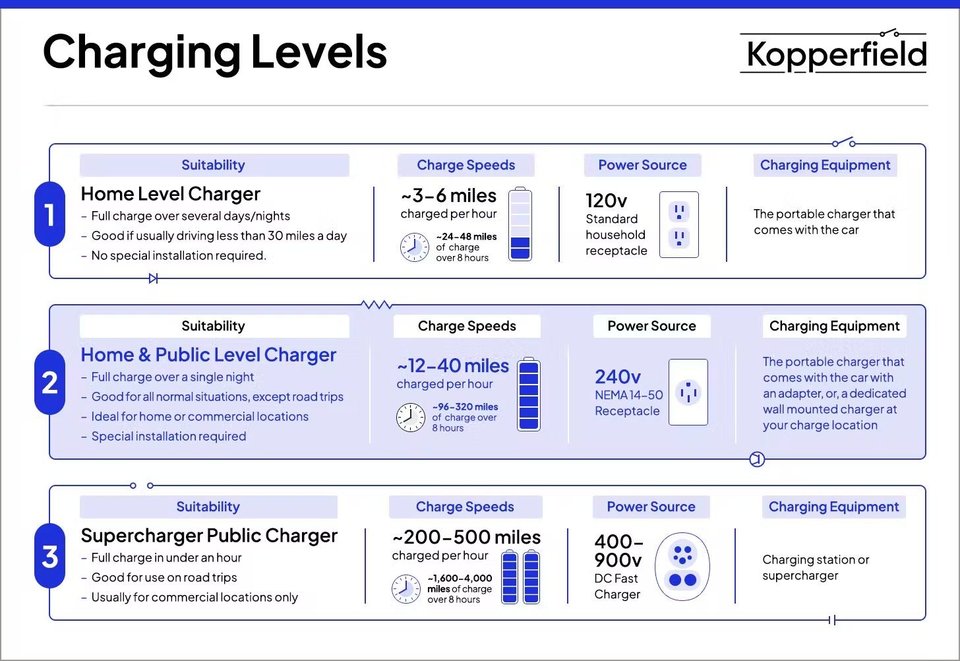In this article, we'll walk you through the three main types of EV chargers.
But first, let's cover some basic terminology.
What is an EVSE?
"Electric vehicle supply equipment," or EVSE, is the proper name for the machine you install in your garage or driveway to power up your EV each night. Though it's not technically a charger, that's what it's most commonly called.
Why are there different levels of EV chargers?
The three EV charging levels correspond to the amount of power or voltage they deliver. The more volts, the faster the charging.
What are the different levels?
There are three levels of EV chargers:
- Level 1 "trickle" charging - Level 1 charging is essentially plugging your car into a wall socket at your house or parking garage. It's slow but gets the job done in a pinch.
- Level 2 charging - Level 2 chargers are the quickest option for home charging. Level 2 chargers use a standard 240-volt socket or hardwire directly into your home's electrical panel. Installing a Level 2 home charger requires an installation from a licensed electrician.
- Level 3 "DC fast charging" - These super-fast chargers use DC (direct current) power, which is different from your house's AC (alternating current) power. Level 3 chargers are only found at commercial charging stations and are not available for home use.

Do some EV charge fasters than others?
One factor that determines charge speed is the model of your EV. There's a broad variance in how many amps an EV can accept, which impacts charging times at each of the three charging levels.
It's a good idea to know your car's specs before shopping for a home EV charger.
What is Level 1 "trickle" charging?
Level 1 charging is commonly referred to as "trickle charging" due to its slow speed. It uses 120-volt power, half the amount of energy used by Level 2 chargers.
You can plug your EV into any standard wall socket using the Level 1 charger included with most EVs. It's a nice feature in a pinch but not the most dependable option. You'll get about 3 to 6 miles of range per hour with a Level 1 charger, so getting a full charge could take 30 hours.
What is a Level 2 EV charger?
Level 2 charging is the fastest option for the home. These chargers, which run on 240-volt electricity, are also found at public charging stations along local roads (shopping malls, etc.). Studies show that the happiest EV owners install a Level 2 charger in their garage. They wake up every day knowing they have a full charge to handle their daily driving.
Level 2 chargers typically provide between 12 to 44 miles of range per hour of charging. Charging from a Level 2 source usually means the vehicle will be completely charged overnight, even if you start with a nearly empty battery.
Installing a Level 2 home charger requires a licensed electrician.
What is it called Level 3 'DC fast charging'?
Level 3 rapid chargers are sometimes an option for road trips along major highways. However, you can't install a Level 3 charger in your home because it uses a different kind of power.
Instead of 120V (Level 1) or 240V (Level 2), these chargers deliver 480V, vastly speeding up charge times. Rapid chargers typically provide 200 to 500 miles of range per hour. You can charge some EV plug-in vehicles to 80 percent in under half an hour.
Level 3 includes "DC fast charging" (DCFC) and "Supercharging" (this is specific to Tesla). It's called "DC fast charging" because these chargers use direct current (DC) vs. the typical alternating current (AC) power, which is standard in US homes and buildings.

Related articles

